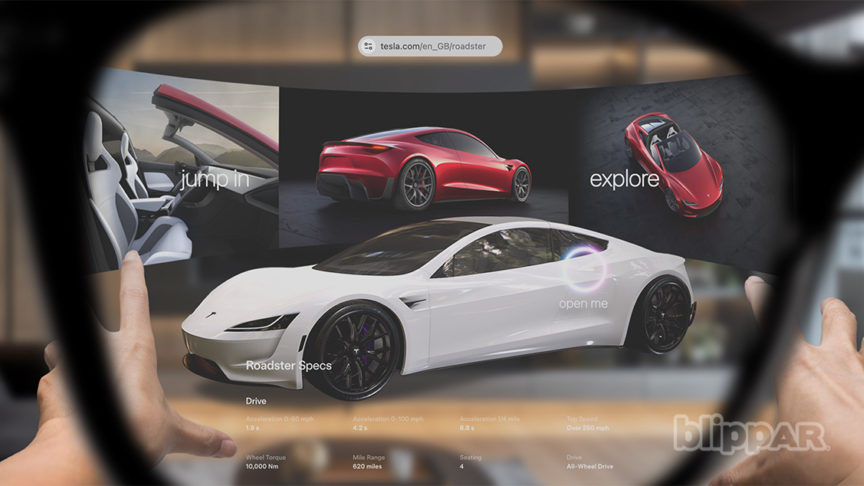Last year put a brighter spotlight on environmental, societal and governance (ESG) concerns.
So, as we settle into 2021, it’s no surprise that stepping up ESG efforts is high on the agenda for businesses. From Boeing committing to flying planes with 100% sustainable aviation fuel by 2030, and Ocado’s B-Corp aisle for purpose-led brands, to the TikTok for Black Creatives incubator programme, the drive towards positive change is moving ahead at speed.
Global focus on tackling wider sustainability issues was already growing before COVID-19; as shown by the multi-faceted United Nations goals for tackling social inequality, raising living and working standards, and reducing negative climate impact. But the pandemic has fuelled awareness of the need for greater action from all sides – brands, companies and individuals included. And with augmented reality (AR) rapidly entering the mainstream due to recent developments in AR-enabled smartphones, 5G connectivity and Light Detection and Ranging (LiDAR), the technology is ready to drive these initiatives forward in a variety of ways.
Offering educational experiences
The recent shift to online learning has underscored technology’s increasingly integral role in enabling remote education. But this isn’t the only way smart tools are innovating learning experiences. Over the last few years, AR has gained recognition as a key means of reducing barriers to learning by making education more accessible, interactive and engaging, thereby providing education that opens the door to greater opportunities for diverse groups of people.
For example, tech company 360Ed has created an AR smartphone app that brings advanced high-quality learning to some of Southeast Asia’s most deprived regions; with AR flashcards allowing students to activate immersive visuals, instead of relying purely on memorisation. Similarly, the Virtuali-tee from Curiscope combines real-world and AR learning through a t-shirt that can be scanned to open virtual details about different parts of the human body.
Outside of classrooms, there is also scope for AR-assisted learning to drive deeper connection with the natural world and key environmental issues. A couple of years ago, Blippar created AR-enabled bracelets in its partnership with the Awavena project. Using live data, the bracelets showed, in real time, the environmental threat to the Amazon rainforest caused by deforestation and forest fires, and were given to delegates at the World Economic Forum in Davos to help raise awareness of climate change and its impact on the Amazon. Looking forward, an AR app associated with David Attenborough’s ‘The Green Planet’ project is set to help users get closer to rare and exotic plants and observe their behaviour, as well as the animals that live among them.
Illuminating sustainable ethical practices
Sharper focus on responsible buying has also put ethical business at centre stage, including production, distribution, and worker welfare. As illustrated by public outcry around factory conditions in the fashion industry in 2020, consumers are not only leaning towards conscious purchasing, but also want companies to embody responsible values; meaning good ethics are now critical for success on multiple levels. In fact, the latest Edelman Trust barometer shows confidence in organisations is significantly higher when they embrace sustainable practices.
Several leading brands and organisations have already demonstrated strong dedication to ethical principles. Dr Martens, for instance, follows a five-pillar sustainability strategy where responsible action is embedded across the business: from eco-friendly design, manufacturing and supply chains, to ensuring all employees are treated fairly. Through AR activations on products and packaging, businesses can go one step further and give consumers a clearer view of how their ESG approach is translated into operational processes.
An example can be seen in the AR experience developed by Blippar for Mars and its Uncle Ben’s rice products – tracing the entire journey from farm to fork – or Blippar’s campaign for Heineken, “Brewing a Better World”, which enabled consumers to scan Heineken bottles and engage with their favourite products on their journey to sustainability. But this is far from the limit of AR’s possibility. AR can also be applied to many other products and industries, such as labels users can scan to see how items of clothing are made and whether employees receive a living wage.
Empowering workforce fuelled change
Launching a new ethics driven ESG programme is one thing, but making sure workers have the knowledge and skills to implement it is another. As company priorities and procedures evolve, so must the training they provide to help each employee adapt and continue to thrive. This is an area where AR can be highly beneficial in enabling companies to quickly and efficiently up-skill their people, without putting individual safety at risk.
Manufacturing is high on the list of sectors that have been tapping AR to enrich and fast-track training for many years. Engineers at Lockheed Martin have long used AR glasses to cut down the learning curve for aircraft assembly; using renderings of parts and instructional overlays to achieve practical knowledge building, rather than relying on traditional manuals alone.
Plenty of opportunities exist, however, for AR to support consistent learning across a diverse range of tasks. For example, that could include AR checklists employees can harness to assess and log the energy efficiency of different machinery in automotive manufacturing against carbon reduction KPIs. The same principles can also be used to limit ongoing wastage for other products. Burberry, for example, uses AR technology to place prints onto garments and allow real-time feedback. This reduces paper usage at the design stage and cuts factory waste as fewer iterations are required, resulting in a more efficient and sustainable process.
Unlocking funding for charitable causes
With fundraising events placed on long-term pause, the pandemic has presented sizable challenges for charities and non-profit organisations, hampering their ability to reduce the poverty gap and offer support. Research conducted late last year reveals 40% of charities and community groups are in a worsening financial situation, even as over half expect demand for their services to rise amid ongoing difficulties caused by lockdowns and unemployment.
AR, however, can play a valuable role in bolstering support and increasing the flow of crucial funds. As seen in the British Heart Foundation’s first ever AR billboard campaign in 2016, which blended real-world settings with virtual visuals to create a highly impactful way of highlighting the effect donations make on people’s lives and circumstances. This approach can also be applied in AR apps that individuals can use independently. For example, by developing experiences that allow users to explore the world around them and access overlays detailing homelessness figures and food bank use in their local area, with donation links enabling instant in-app donation.
With governments committing to ambitious climate change targets, and consumers increasingly demanding ethical and responsibly sourced products or services, ESG is likely to remain a hot topic for the rest of the decade. And AR, along with other immersive and experiential technologies, will be a vital enabler for related initiatives.
Find out more about how we’re already using AR to drive sustainability by visiting the Blippar website.
Faisal Galaria
CEO, Blippar



